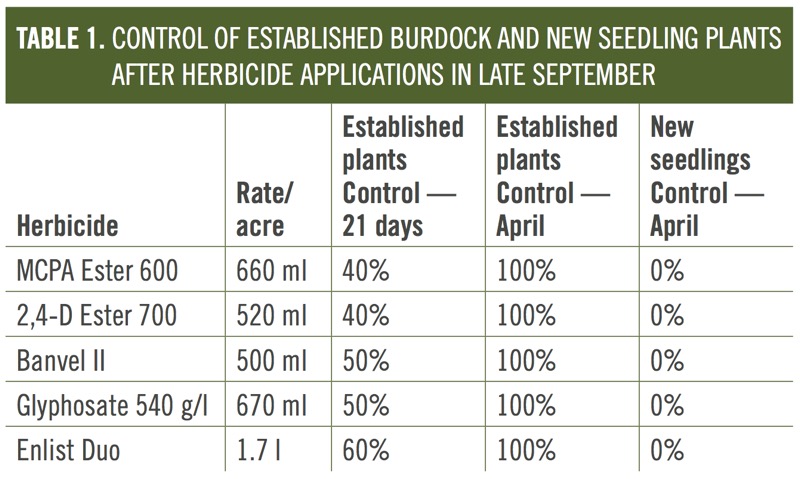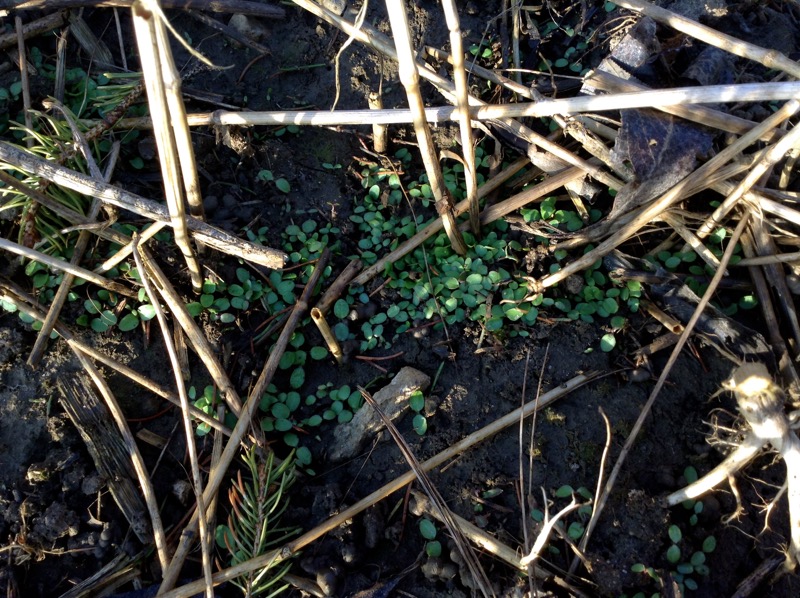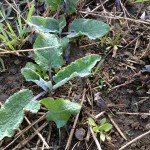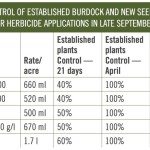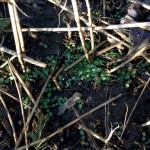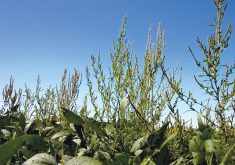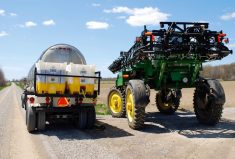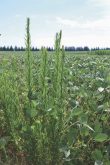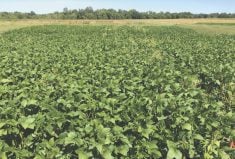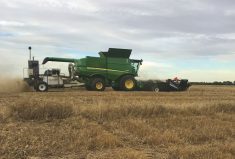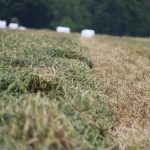
#Pest Patrol -Burdock -Figure 1
Figure 1. On April 30, 2015, leaves have emerged from the large taproot and tower over newly emerged seedlings.
Photo: Supplied
table 1
Table 1
Photo: Supplied
#Pest Patrol -Burdock -Figure 2
Figure 2. On the left, an unsprayed area from last fall versus, on the right, a fall-applied herbicide treatment.
Photo: Supplied
#Pest Patrol -burdock -Figure 3
Figure 3. Although effective at controlling established plants, none of the fall treatments stopped new seedlings.
Photo: Supplied
Knowing how this plant reproduces will influence how you manage it. Burdock is biennial and reproduces only by seed. Following seed germination in the spring, burdock will grow into a large leafy rosette plant with a large taproot that allows it to overwinter. In the second year, burdock will flower and produce the burrs we all know. Each burr will contain about 30 to 40 seeds, with an entire plant producing anywhere from 9,800 to 17,000 seeds.
In late April, go where you’ve seen burdock and you should find both established plants with large leaves that have emerged from the large taproot as well as young seedlings that have germinated from seed in the spring (Figure 1).
Read Also
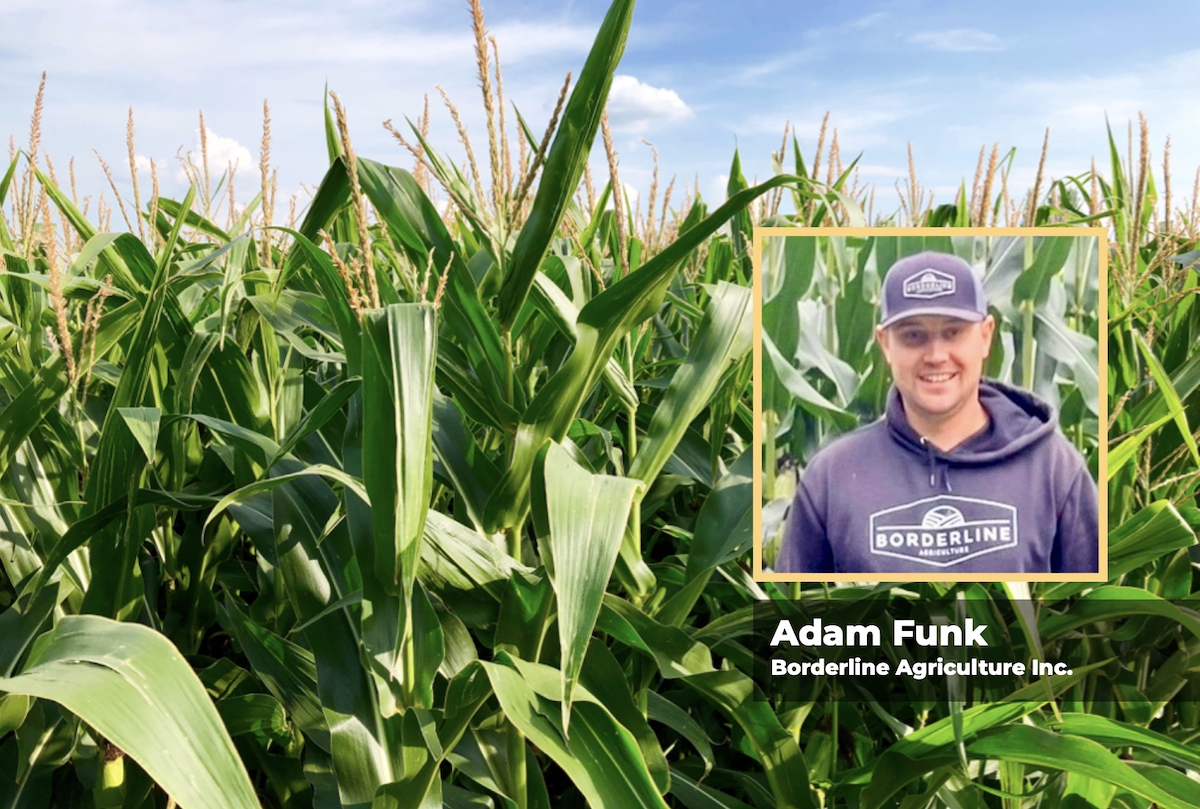
Agronomists share tips for evaluating new crop products and tech: Pt. 3
With new products, new production practices and new technology converging on the agriculture industry at a frenetic pace in recent…
Although the young seedling plants are easy to kill in the spring, the larger overwintered plants are more easily controlled the previous fall. Table 1 lists the results when herbicides were sprayed against large established burdock rosettes in late September 2014 and evaluated in spring 2015.
A couple of things stand out in Table 1. First, none of the fall treatments were all that impressive several weeks after application. But be patient: control of those plants in the spring has been very good (Figure 2). Second, nothing applied in the fall stopped seed from germinating in the spring. Management of these seedlings in early May with either tillage or herbicides is important to stop the cycle of established overwintered plants that eventually produce seed. Figure 3 shows a significant flush of new seedling plants coming through a treatment that was successful at removing the established plants.
Recap: Apply effective herbicides against established rosette plants in the fall and then deal with young seedlings in the spring with tillage or effective herbicides. Because seed may be viable for two or three years, this may need to be repeated.
Have a question you want answered? Hashtag #PestPatrol to @cowbrough or email Mike at [email protected].

